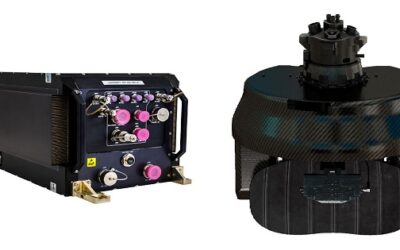Reactive jamming technology emerges as a primary tool to fight RCIED threats
Remote-controlled improvised explosive devises (RCIED) remain one of the major threats in asymmetric scenarios. In this arena, industry develops advanced IED jamming technology to mitigate the threat of attack by increasingly sophisticated RCIEDs, while traveling by vehicle. The threat of attack by RCIED weapons, also known as roadside bombs, is high in many countries. The threat persists where civilians are targeted in dozens of countries in conflicts and also not at war – especially in transit systems and prime urban locations.
To counter the threat, the Swiss company COMLAB develops and manufactures convoy jammers, portable jammers, and modular jammers using reactive jamming technology to guarantee highest efficiency and processing gain for real-time signal detection and disruption in well-covered urban and suburban environments.
From 19 to 23 February, COMLAB showcases its newest generation of jamming solutions at its IDEX 2017 stands B17 (Hall 8).
The jamming products, according to the company, offer a safe application for car convoys and VIP protection, bomb detection, bomb disposal, drone jamming, military, and government.
All of COMLAB’s jamming solutions are based on a reactive signal generation and highly efficient power generation, meaning that threat frequencies are jammed microseconds after they appear with all available jamming energy. Their operation and monitoring principle is simple: operators use a tablet PC with touch screen.
COMLAB says its Portable Jamming System (PJS) is a “highly integrated easy-to-operate” jamming system covering a broad frequency range. For increasing the jamming efficiency or extending the frequency range, several PJS units can be combined via the AirSync app. COMLAB delivers PJS as a ready-to-use system.
The company’s second product, the Convoy Jamming System (CJS), is a complete factory-fitted system and is supplied on a turnkey basis. With the specially adapted antenna array, CJS offers a “very sophisticated approach” towards applying jamming energy just where it is needed, the company notes. CJS is powered by a managed battery system, offering an autonomy of several hours. It depends on battery type and jamming activity. During mobile missions, the auxiliary alternator permanently charges the battery and when stationary, the battery can be charged by utilising an AC/DC converter.
The purpose of COMLAB’s Modular Jamming System (MJS) is to suppress all unwanted wireless communication (GSM, UMTS, WLAN, Bluetooth, LTE, satellite phones) within designated areas, including government buildings. As far as usage in these areas is concerned, the MJS is typically operated as a fixed installation. Depending on the size and the complexity of the object or infrastructure, jamming units can be connected via fibre-optic links. The company says a specific signal path, consisting of signal generator and power amplifier, is required for each communication service. In this way, the maximum desired modularity is ensured.
Stefan Nitschke
























